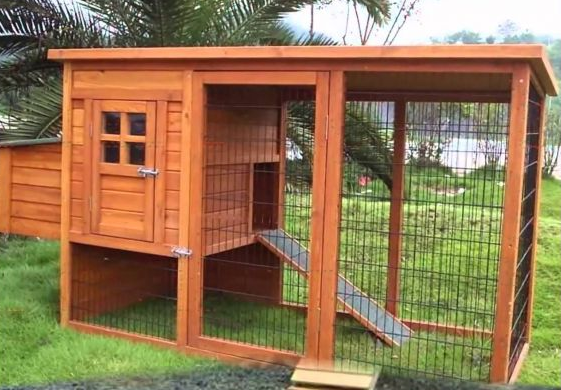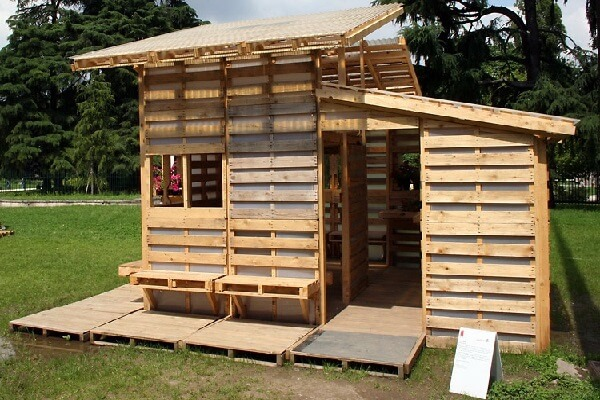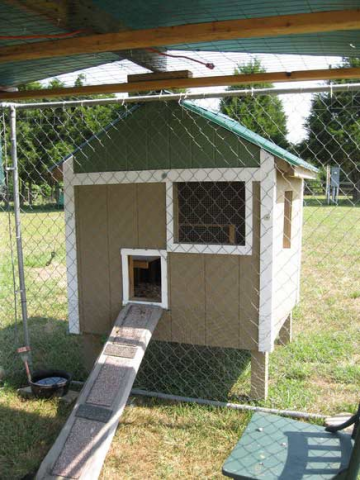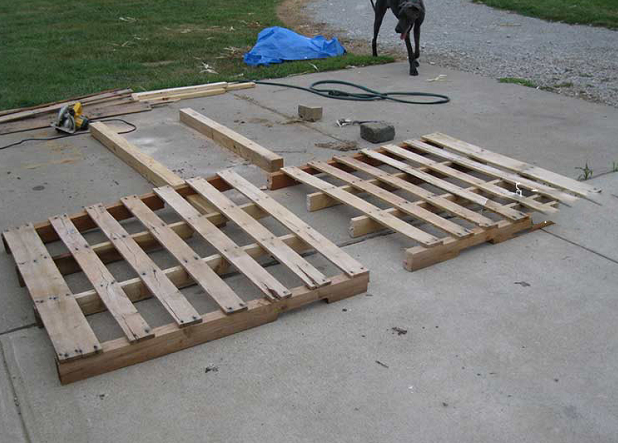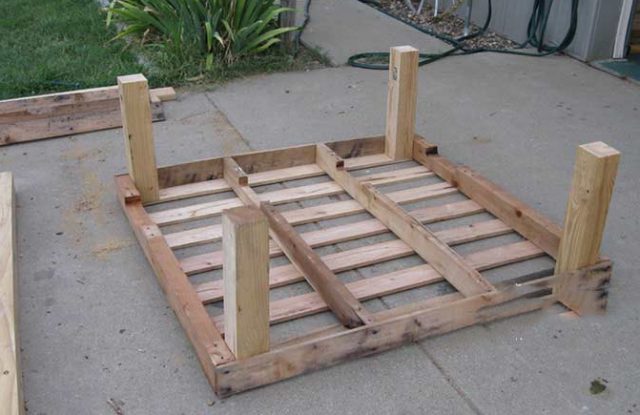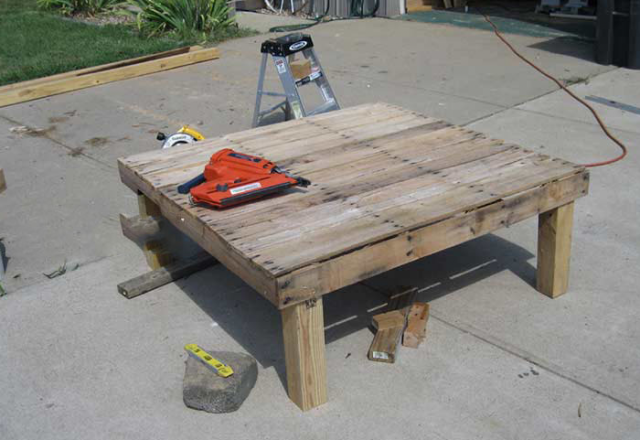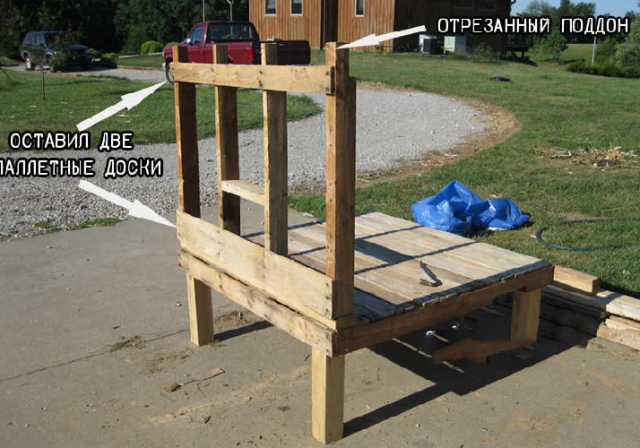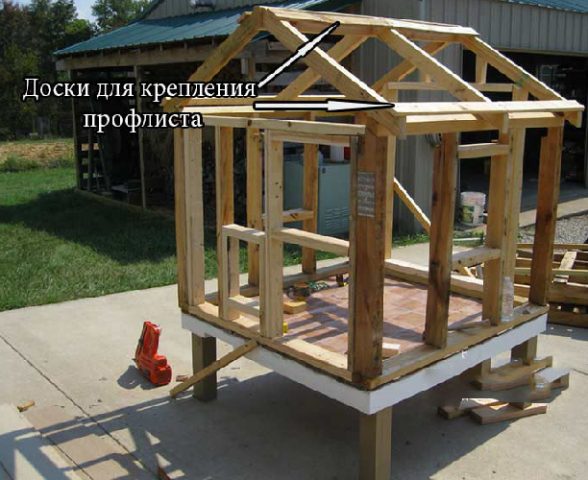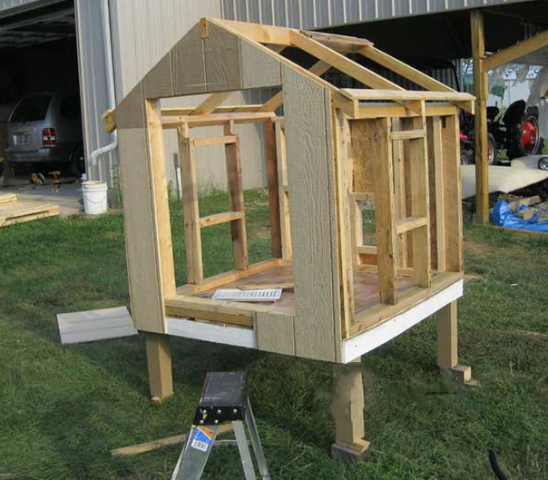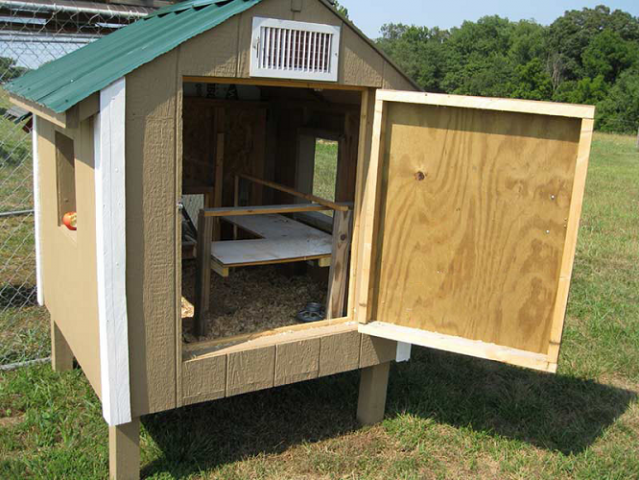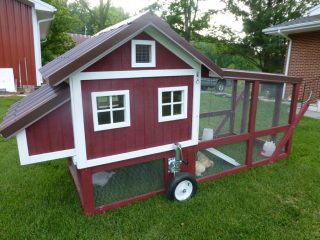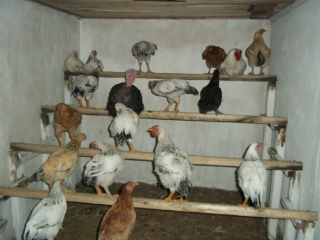Content
Wooden pallets used to transport goods can be called an ideal material for the construction of simple outbuildings for a courtyard. Garden furniture, fences, gazebos are built from simple material, so it will not be difficult to build a chicken coop from pallets with your own hands. This option will help save money and provide the whole family with chicken eggs and meat.
How to use pallet material correctly
Most buildings based on wooden pallets are made in two ways:
- Dismantling the pallet into separate boards and bars, with their further use as a lining or edged board, from which almost any structure can be made;
- By assembling the supporting frame of the chicken coop from whole pallets. In this way, you can quickly make the walls and roof of a relatively large building.
From what material and how to build a chicken coop, each owner decides according to his own understanding. In order to build a free-standing full-size chicken coop from ready-made pallets, you will need to make a solid pile foundation and a frame from a bar, otherwise the structure will turn out to be unstable and unsafe for the chicken.
For example, you can build a room for chickens from euro pallets according to the scheme shown in the photo. To prevent the chicken coop from collapsing under its own weight, vertical posts are installed inside the building - supports that absorb the bulk of the roof and roof frame.
In this case, pallets are used as material for the walls, and the main part - the chicken coop frame and the roof will have to be made of purchased timber and slats, which will significantly increase the cost of construction. In addition, even such a simple version of the chicken coop will have to be sheathed and insulated if the project provides for the winter use of the chicken coop.
Therefore, if there is a desire to assemble a room for chickens from boards from a pallet, then it is better to build the house itself according to a compact scheme, as in the photo.
We build a small house for chickens
Boards and bars from which pallets are assembled, as a rule, are treated with an antiseptic during the manufacturing process, therefore, additional coatings with preservatives are not required.
To build a frame version of the chicken coop you will need:
- Knock down the base of the building and the frame of the chicken coop, make windows, an entrance and a door to the room.
- Assemble the gable roof.
- Sheathe the walls with clapboard or siding panels, hang the door and cover the roofing.
For the variant of the chicken coop below, construction pallets with a size of 1270x2540 mm were used, used for transshipment at transport hubs, warehouses and sea terminals, photo.
The dimensions of the box of the chicken coop 121x170 cm make it possible to transport the body assembled using a conventional onboard Gazelle.
The small size of the room allows you to comfortably accommodate 5-7 chickens.
We collect the base and frame of the building
For the base of the chicken coop, it is necessary to knock down a strong and rigid box that will hold the vertical racks of the frame. To do this, cut the pallet in half and get a workpiece measuring 120x127 cm.The timber obtained in the process of cutting one of the halves is used to make legs, we will sew the surface of the future floor with a board, photo. In the future, it is necessary to lay a sheet of tin or PVC linoleum on the boards so that bird droppings can be quickly and conveniently removed from the chicken coop.
Next, you need to make the walls of the chicken coop. To do this, cut one whole pallet into two halves and remove part of the central boards. Each of the halves of the pallet will serve as the basis for one of the side walls of the building, photo.
We install them on the base and nail them down. We use the remaining boards and beams for the manufacture of windows and the upper strapping of the chicken coop frame.
Roof fabrication and finishing operations
The next step is to make a rafter system for the gable roof of the building. The small size of the chicken coop allows you to build a roof frame from two long beams left over from the pallet. After installing the triangles on the upper trim of the walls, we connect the tops with a ridge beam, and in the middle part we fill one additional rafter beam.
After leveling the rafter system of the chicken coop, it is necessary to install a trap under the future entrance door. To do this, we cut out the door frame in the form of the letter "P" from the boards remaining from the pallet and install it on the front wall of the chicken coop. We hammer the back wall with a bar and put jumpers under the future window. As a roof covering, ordinary corrugated board is used, laid on a layer of roofing material. From the remnants of the pallet timber, corner vertical posts are stuffed, increasing the rigidity of the entire box.
Inside the building, we install two shelves for laying hens' nests and two beams for a perch. Walls can be covered with clapboard or siding, as in this case. In the sewn lining of the panels, we cut out windows for the installation of a window frame with a lattice, we process the inner surface of the chicken coop with acrylic varnish. External walls and the base of the building are painted with acrylic paints.
There is no film vapor barrier on the walls, the bulk of water vapor will be removed due to good ventilation of the chicken coop. The door is made of pallet boards and a piece of plywood, resulting in a lightweight and at the same time rigid structure that does not require reinforcement with steel plates and spacers.
Two boards from the pallet are used to equip a ladder or gangway, along which chickens can climb into the room. The lower window or vestibule is closed with a vertical bolt and lifted with a cord.
Conclusion
Most home-builders speak rather positively about the quality of the boards and timber from which the pallets are assembled. In fact, this is the second reason, after the availability of material, for which a wide variety of joinery buildings are so willingly built from pallets. The case is surprisingly heavy and durable. For installation on the ground, it is enough to pour and level the layer of gravel, hammer in a couple of scraps of reinforcement and tie the chicken house to them.
